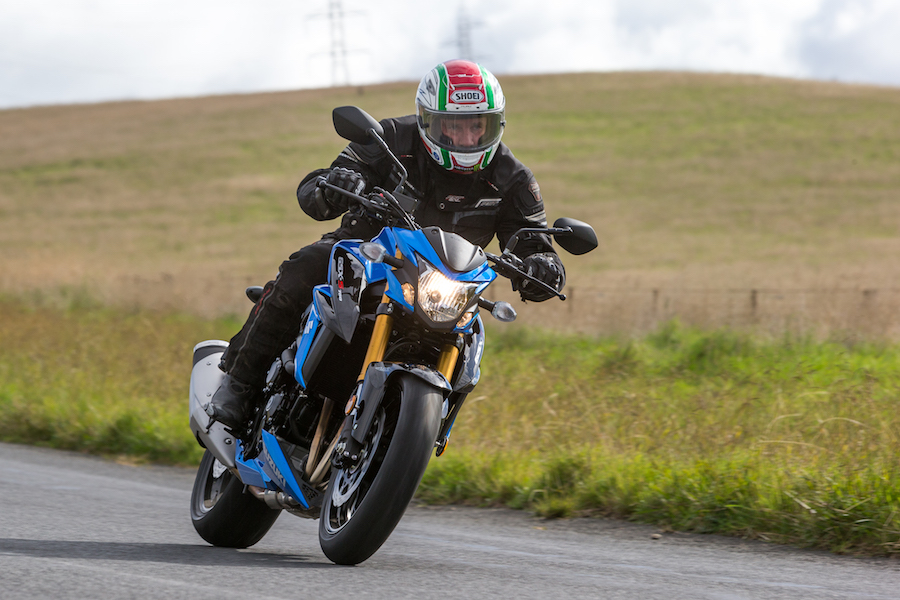As soon as I hit the starter button and heard the induction noise emanating from deep in the airbox, I dropped 30 years in age.
Man, that sounds like the original GSX-R750 with its lovely burble. I was lost in a wave of nostalgia and adrenalin was pulsing through my old veins like it once did back in the eighties. The GSX-S750 aroused my senses more than I anticipated recently on a quick spin around Melbourne’s western outskirts. The new GS-R replacement is not only good looking, but quite a performer at a bargain price.
Suzuki has been very aggressive with its 2017 models, giving the consumer lots of upgrades, and this new naked 750 is no different. The updated looks are very sexy, but performance has been the key area of improvement for this year’s bike.
The GSX-S750 gains the LCD dash straight off its 1000cc sibling, and a three-step traction control system that can be turned off with the flick of a switch on the fly. Tapered ’bars are new and just the right height to match the more upright seating position this bike offers over the GSX-R range.
My legs felt tucked up when I initially rode the bike but I became used to it quickly and after a few kilometres it felt normal. The frame has been derived from the GSX-R750 sportsbike, one of the best handlers on the market, and that prowess is not lost in the GSX-S. It’s quite a comfortable bike to sit on with a short reach to the ’bars and a low seat height making it easy and confidence-inspiring at parking time.
The KYB suspension is well matched front to rear and is on the firm side, but there is the option to soften the spring preload on both ends if the rider wants a more comfortable ride.
The new machine retains the GSX-R750 K5 engine from last year’s GS-R but power output has gone up a massive 6kW over the outgoing model. Most importantly, torque has also risen to 81Nm at 9000rpm. There are many reasons for the power increase, but most of the gain comes from Suzuki’s attention to detail in the crankcase design. A new set of pressure-relieving holes has been milled to reduce the pump effect under the pistons. This gives not only better performance but also better fuel economy.
A faster bike needs better brakes and the Nissin two-piece radial mounted calipers work brilliantly, with more than enough performance to pull the bike down from any speed. The pressure needed to apply the brakes is minimal for the effect achieved, and is much improved over the outgoing GS-R.
Just like Suzuki’s GSX-R750 there is something magic about this bike that is difficult to put your finger on. It’s not as fast as a thousand or as nimble as a 600, but it makes even the most seasoned riders among us smile at the end of a day on board.
The first GSX was born 37 years ago and in one form or another the mid-size model has been for sale all that time. And at $11,400 (+ ORC), it may be here in another 30 years, with motorcyclists still singing its praises.
Look out for the full review in an upcoming issue of AMCN

SUZUKI GSX-S750